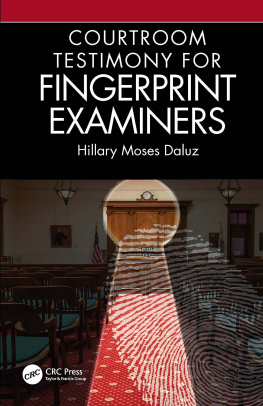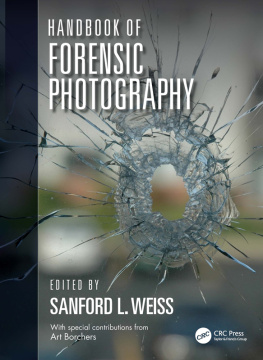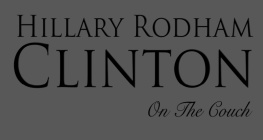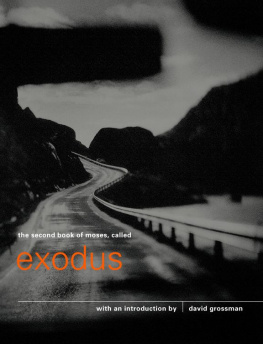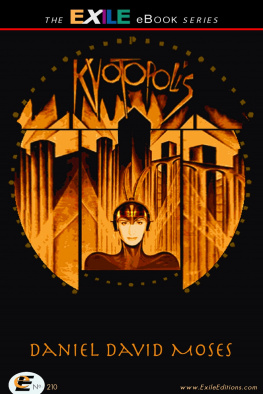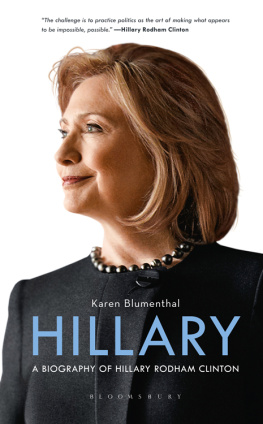First edition published 2022
by CRC Press
2 Park Square, Milton Park, Abingdon, Oxon, OX14 4RN
and by CRC Press
6000 Broken Sound Parkway NW, Suite 300, Boca Raton, FL 33487-2742
2022 Hillary Moses Daluz
CRC Press is an imprint of Informa UK Limited
The right of Hillary Moses Daluz to be identified as author of this work has been asserted by her in accordance with sections 77 and 78 of the Copyright, Designs and Patents Act 1988.
All rights reserved. No part of this book may be reprinted or reproduced or utilised in any form or by any electronic, mechanical, or other means, now known or hereafter invented, including photocopying and recording, or in any information storage or retrieval system, without permission in writing from the publishers.
For permission to photocopy or use material electronically from this work, access
Trademark notice: Product or corporate names may be trademarks or registered trademarks, and are used only for identification and explanation without intent to infringe.
ISBN: 978-0-367-48090-5 (hbk)
ISBN: 978-1-032-05098-0 (pbk)
ISBN: 978-1-003-03794-1 (ebk)
Typeset in Minion Pro
by codeMantra
Figure 1.1 Venn diagram explaining the role of the forensic scientist. Forensic scientists apply scientific concepts to legal matters and thus must be comfortable both in a laboratory and in a courtroom.
Figure 1.2 Questioned notary fingerprints may be compared with exemplar prints in a civil dispute.
Figure 1.3 The structure of the federal court system in the United States.
Figure 2.1 In the movie My Cousin Vinny, Marisa Tomeis character is an automotive mechanic who testifies as an expert witness in a small-town courtroom. (Image courtesy of Everett Collection. My Cousin Vinny, 1992, TM & Copyright 20th Century Fox Film Corp.)
Figure 2.2 The Journal of Forensic Identification, a publication of the International Association for Identification. (From J. Forensic Identx. 67(4), front cover.)
Figure 2.3 A forensic expert demonstrates the Wonder Woman power pose.
Figure 2.4 A forensic expert demonstrates a power pose, the intention of which is to gain confidence prior to testimony in order to effectively present information to the jury.
Figure 2.5 A fingerprint examiner uses a visual aid to explain a fingerprint source identification in court.
Figure 3.1 New neural pathways are formed when experiences give the brain the opportunity to process what is seen with the eyes. In this common optical illusion illustration, some people see a frog while others see a horse.
Figure 3.2 A crime scene diagram is an example of a visual aid that may be a more effective representation of the scene than a verbal description.
Figure 3.3 A fingerprint comparison chart is an effective and transparent method for explaining the fingerprint examiners source identification conclusion to a jury.
Figure 3.4 A one-page handout with images demonstrating the foundations of fingerprint examination.
Figure 3.5 The slide above demonstrates how the eye is drawn to the larger font size of the slides title rather than the content. In the slide below, the content is displayed with a larger font size than the title, highlighting the contents for the audience.
Figure 3.6 Vaporized superglue builds up on the friction ridges similar to how snow accumulates on a railing.
Figure 4.1 An example of a subpoena. (Adapted from Claire CJS, 2016, 20161216 Monica M court subpoena (public version).)
Figure 4.2 The Fairfax County Courthouse in Fairfax, Virginia is a typical courthouse in the United States.
Figure 5.1 Historical photograph of a Grand Jury circa 1922. (From the National Photo Company Collection, Library of Congress, 2020, Special Grand Jury, 5/31/20.)
Figure 5.2 A copy of the 1215 Magna Carta from the British Library. (From British Library, Cotton MS Augustus ii. 106, Magna Carta, 1215.)
Figure 6.1 A courtroom in Sarasota, FL. (From Clyde Robinson, Courtroom in the Old Historic Courthouse Sarasota, FL.)
Figure 6.2 An expert witness testifies in Cambodia at a United Nations sponsored tribunal against senior members of the Khmer Rouge for crimes against humanity, genocide and war crimes. (From Khmer Rouge Tribunal (ECCC), Trial Chamber Hearings in Case 002/02, Mr. Alexander Hinton 14 March 2016.)
Figure 6.3 The ornate, historic rococo-style courtroom inside the Beverley Guildhall, located in Beverley, Yorkshire, England, UK. (From Michael D. Beckwith, Beverley Guildhall Courtroom.)
Figure 6.4 A typical courtroom in the United States. (From Ammodramus, Nuckolls County Courthouse Courtroom.)
Figure 7.1 A judges gavel. (Image courtesy of George Hodan, 2020, Judge Gavel.)
Figure 7.2 The Frye and Daubert admissibility standards.
Figure 7.3 Two images of a tire failure. (Images courtesy of C. Roberts Consulting Engineers, Rochelle, Illinois.)
Figure 8.1 Byron Mitchell fingerprint source identification chart.
Figure 8.2 Known palm print impressions of two monkeys cloned via embryo nuclear transfer were used as visual aids during the Mitchell Daubert hearing to illustrate that friction ridge skin is highly variable, even in genetic clones.
Figure 8.3 A bullet comparison (.380 auto full-metal-jacketed bullets fired in a Smith & Wesson M&P.380 auto) displaying lands and grooves on a questioned and known projectile. (Image Courtesy of Scott Doyle, Firearmsid.com.)
Figure 9.1 A statue of Albert Einstein contemplating the celestial map adorns the grounds of the US National Academy of Sciences in Washington, DC.
Figure 9.2Strengthening Forensic Science in the United States: A Path Forward is a publication of The National Academies Press, the National Academy of Sciences, Washington, DC. (From National Research Council. 2009. Strengthening Forensic Science in the United States: A Path Forward. The National Academies Press: Washington, DC.)
Figure 9.3 The Expert Working Group on Human Factors in Latent Print Analysis authored Latent Print Examination and Human Factors: Improving the Practice through a Systems Approach in 2012. (From Expert Working Group on Human Factors in Latent Print Analysis. 2012. Latent Print Examination and Human Factors: Improving the Practice through a Systems Approach. U.S. Department of Commerce, National Institute for Standards and Technology: Washington, DC.)
Figure 9.4 The latent impression (a) and exemplar impression (b) from the Timothy Bornyk case. (From Wilkinson, D, Richard, D and Hockey, D. 2018. Expert fingerprint testimony Post-PCAST A Canadian case study. J. For. Ident. 68(3): 299332. Figure 2, page 303.)
Figure 9.5 The AAAS Report conducted an analysis of over 200 scientific publications and provided a gap analysis with recommendations for future research. (From Thompson, W, Black, J, Jain, A and Kadane, J. 2017. Forensic Science Assessments: A Quality and Gap Analysis Latent Fingerprint Examination

